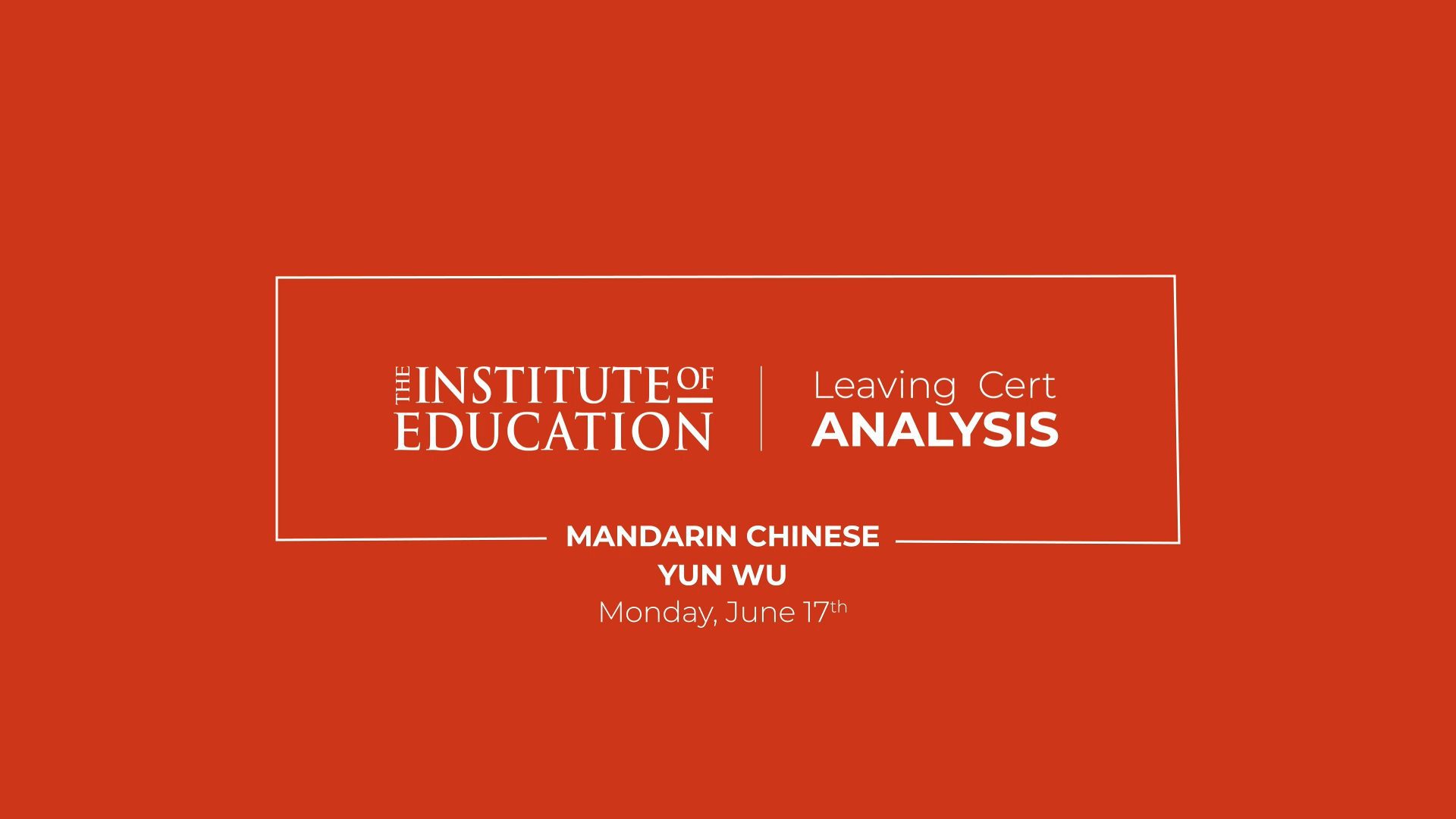Reaction to 2024 Leaving Certificate Mandarin Chinese (Higher Level) by Yun Wu, Chinese teacher at The Institute of Education.
- A comprehensive paper embedded with the value that ‘language is use’.
- The paper called for a mixture of essential skills and a more mature connection of language and culture.
This is the third June sitting for the Mandarin Chinese exam. There were some minor changes to the paper, as was expected, but these changes did not increase the difficulty. Instead, the new elements required students to show a comprehensive set of skills, making sure they paid careful attention to the process of learning. Students’ skills and knowledge were tested with different angles on reading, grammar and vocabulary.
Section A: Reading opened with a very nice Question 1 which focused on Weather, Time and Numbers. The questions were clear and tested some very practical knowledge: essential if a student were ever to visit China. Question 2 on animals that are national treasures showed that the exam setter really considered the cultural background of the students. The material connected the iconic Chinese image of the panda with the black and white fleece of Irish lambs. This examined vocabulary of colours and the body within the context of the culture for which this exam was designed. Question 2 (E) was excellent as it tested students’ grasp of the logic of the Mandarin language by making sure they understand the radical of each character. This means that students not only needed to know what to say but why they say it like that. Knowing this information will help students have a solid foundation for further study. Question 4 was a translation question, which appeared for the first time at Higher Level. While this tested an essential skill, 4 (F) required a more mature understanding to answer. Students were asked to compare the approaches to email writing in English and Chinese. New learners might struggle to fully grasp the different intentions, while those who grew up with the language might struggle to verbalize something they might subconsciously feel through English. The question was very doable but posed an interesting and fair challenge to students of all backgrounds.
Section B: Writing opened with three very practical writing prompts. The first two were about invitations and meetings and thus emphasized a series of expressions likely to be used in day-to-day life. Question 5 (C) asked students to write a long message to their friends in a way that probably is not true to life for the modern teenager, but the theme and vocabulary was very fitting. Students who were a little uncertain in how to approach the format could look back to the email in Question 4 as a helpful hint.
The longer compositions of Question 6 continued this approach of building the questions around the lives of students. 6 (A) was a new topic for the exams, Festivals, but an open-ended question meant a student could express their culture in any way they wished. Chinese New Year, Mid-Autumn Festival, St. Patrick’s Day and Christmas were all equally good choices here, so students should be very pleased. Option (B) echoed material prepared for the Oral’s Language Portfolio Sector, only updating the material to reflect their completion of their secondary school studies. Option (C) asked about the student’s family, which should be very familiar territory. This is the kind of vocabulary that teachers often cover at the beginning of a student’s education in Mandarin, so students could draw on some fundamental material.
This was a more complex exam than previous years as students needed to have a more comprehensive grasp of the language. However, this was made more approachable by making sure so many questions were rooted in the real experiences of a student of Mandarin Chinese in Ireland.

